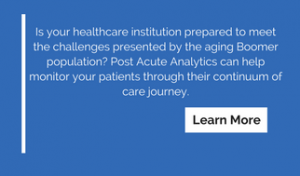According to Pew Research and the Social Security Administration, 10,000 men and women reach retirement age each day.
If that number seems big – it is.
The impact to society will be huge, especially to healthcare. The vast amount of Americans hitting age 65 over the next few years means the number of people eligible for Medicare will increase to 20 percent of the U.S. population by 2029. That’s up from 13 percent in 2011.
The problem is that as these working Baby Boomers are retiring, the workforce is diminishing. This means that the number of people who will be paying into Medicare will drop from 63 percent to just 57 percent by 2029.
As this huge population switches from commercial plans, the costs for Medicare and Medicaid will more than double. And as fewer people pay into the plan, Medicare taxes and the Trust Fund will cover less and less. By 2033, some predictions indicate that the Trust Fund will be bankrupt, and taxes will pay only for 48 percent of Medicare and Medicaid costs.
These facts are especially dispiriting when a research study, published in JAMA Internal Medicine, is taken into account. According to the report, which compared the overall health of the boomer generation to that of their parents, baby boomers have a longer life expectancy than their parents and are more likely to have higher rates of hypertension, higher cholesterol, obesity, and diabetes.
So, not only is the need for healthcare services going to increase, but also the cost of that care is going to become harder than ever to cover.
“Health and Human Services, which oversees Medicare, has seen this issue coming and is trying to get ahead of it,” said Saqib Akhter, CEO of Post Acute Analytics, a company that helps health systems and providers monitor their patients in real time outside their four walls.
“With this many new enrollees to Medicare, there are going to be challenges. Medicare is taking steps to offset rising healthcare cost with plans such as bundled payments, capitated contracts, Medicare advantage, ACO, and other payment models along with chronic care management and comprehensive primary care with hopes to reduce unnecessary costs. What all of those plans require, however, is cooperation and transparency by patients, providers, post-acute institutions, and everyone else along the continuum of care to deliver the best patient care at the appropriate costs. Should there be a break in this cooperation, these payment models fall apart in their goal of curtailing inappropriate costs.”
Additionally, with these new payment models, the total-cost-of-care risk is increasingly being pushed to health systems, physician groups, managed care plans, and also certain post-acute groups, as well. Since this aging Boomer population is much more likely to become seriously ill, they have the potential to be more expensive.
“Boomers, specifically those with multiple chronic conditions, are going to need care – whether it’s chronic care management, rehabilitation or skilled nursing supervision – that is beyond what most traditional providers are able to provide on an extended basis. In this case, post-acute care becomes essential, which means providers and payers at risk for patient costs and overall outcomes need some way to easily communicate outside their four walls with patients, their caregivers and other providers involved in patients’ care – real-time monitoring of patients becomes essential.
“Through ‘Anna,’ Post Acute Analytics’ technology platform, we can advise on the best processes and insights that are available in real-time to make sure that patient goals, with quality and cost, are achieved. Providers are able to see real-time patient total-cost-of-care and health status, how they’re trending, whether they’re in the black or the red as it relates to each patient, patient outcomes, and high-risk triggers where they need help so physicians can intervene in real-time.
“The outcome is better patient care at lower cost.”








